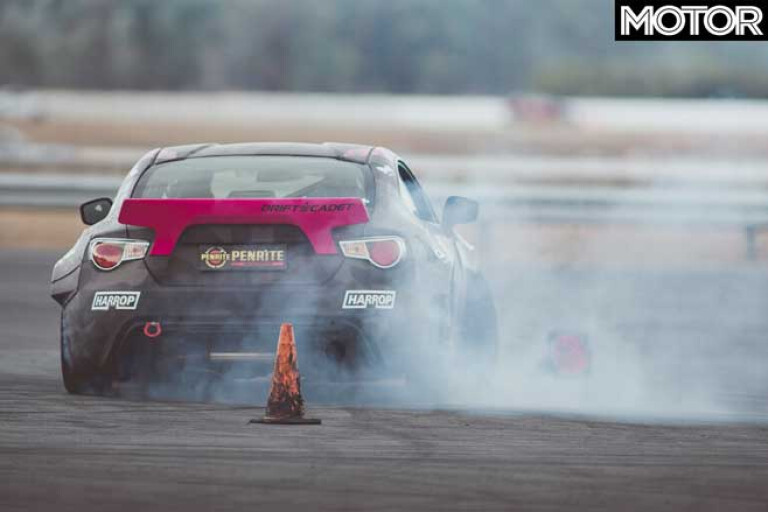
It’s taken a while, but drifting has finally begun to enter the mainstream consciousness.
For so long seen as ‘car gymnastics’ and looked down upon by traditional motor racing enthusiasts, slowly but surely, the likes of the Fast and the Furious films, Ken Block and the emergence of international championships have legitimised the sport.

Even by motorsport standards, though, it’s not the easiest activity to get involved in. Starting out on a regular track is not advisable, as effectively you’re throwing your car out of control – initially at least – and concrete walls are very unforgiving.
Thankfully, the crew at Drift Cadet can help. Louis sampled its Level 1 course and yours truly did likewise when assessing the drifting capabilities of my Subaru BRZ long-termer. Now it’s time to take it one step further and sign up for Level 2.
Both courses cost $599 and Drift Cadet usually run two courses per day at Winton Raceway’s Skid Pan. We drove up from Melbourne in the morning, did the course in the afternoon and were home again by mid-evening.
The idea is that once Level 1 has been mastered, which takes place on a wet surface with mildly modified Subaru BRZ/Toyota 86 road cars, students move on to the more advanced Level 2 to further develop their skills.

For Level 2 the course is dry (though it was raining intermittently during our sessions), the exercises are more complex and the cars are much more serious, featuring supercharged engines, stiffer coilover suspension, heaps of steering lock and stripped interiors.
An instructor rides with you in the car and places are limited to ensure plenty of track time. We had eight sessions of five minutes each, which keen mathematics students will deduce is 40mins of wheel time.
A quartet of cones is arranged in a square which form the basis a trio of courses which weave in and out of them. Each tests the techniques learned in Level 1, including initiating a drift with the handbrake, tight donuts, slowing the car while remaining sideways and transitioning from one lock to the other.

It goes without saying that it’s massive amounts of fun: I challenge anyone not to get out of powerful, rear-wheel drive sports car on a slippery surface without a big smile on their face.
However, it’s also valuable. Having slid a few cars around over the years I was sceptical about the slow-speed nature of the course – you never go beyond first gear – but by keeping it basic it allows the instructors to focus on your technique and everything you’re doing wrong.
And trust me; you’ll be doing plenty wrong. Like most things, if you can’t get the basics right at slow speed then there isn’t any point trying to go faster, as you’ll be just be making the same mistakes at higher speeds.
Like any good instructor, the Drift Cadet guys aren’t there to flatter your ego, either. They are supportive and encouraging, but founder Peter Pham refused to let me move on to the third exercise until he was happy with my progress on the second.

I was getting around the course ok, but he wanted more sudden transitions, more speed and more angle; he believed I was capable of more and pushed me to go harder, an approach I really like.
If you’re interested in dipping a toe into the sport of drifting, want to work on your car control or just want to have fun skidding someone else’s car around, the Drift Cadet courses are definitely worth a look. Especially as if you think the course isn’t for you after a couple of sessions, your money will be refunded.
No, they aren’t cheap, but after seeing what goes into them it’s tough to argue they aren’t good value, either. They might even give you a greater appreciation of an oft-misunderstood sport. We’ll be back for a refresher, that’s for sure.

COMMENTS